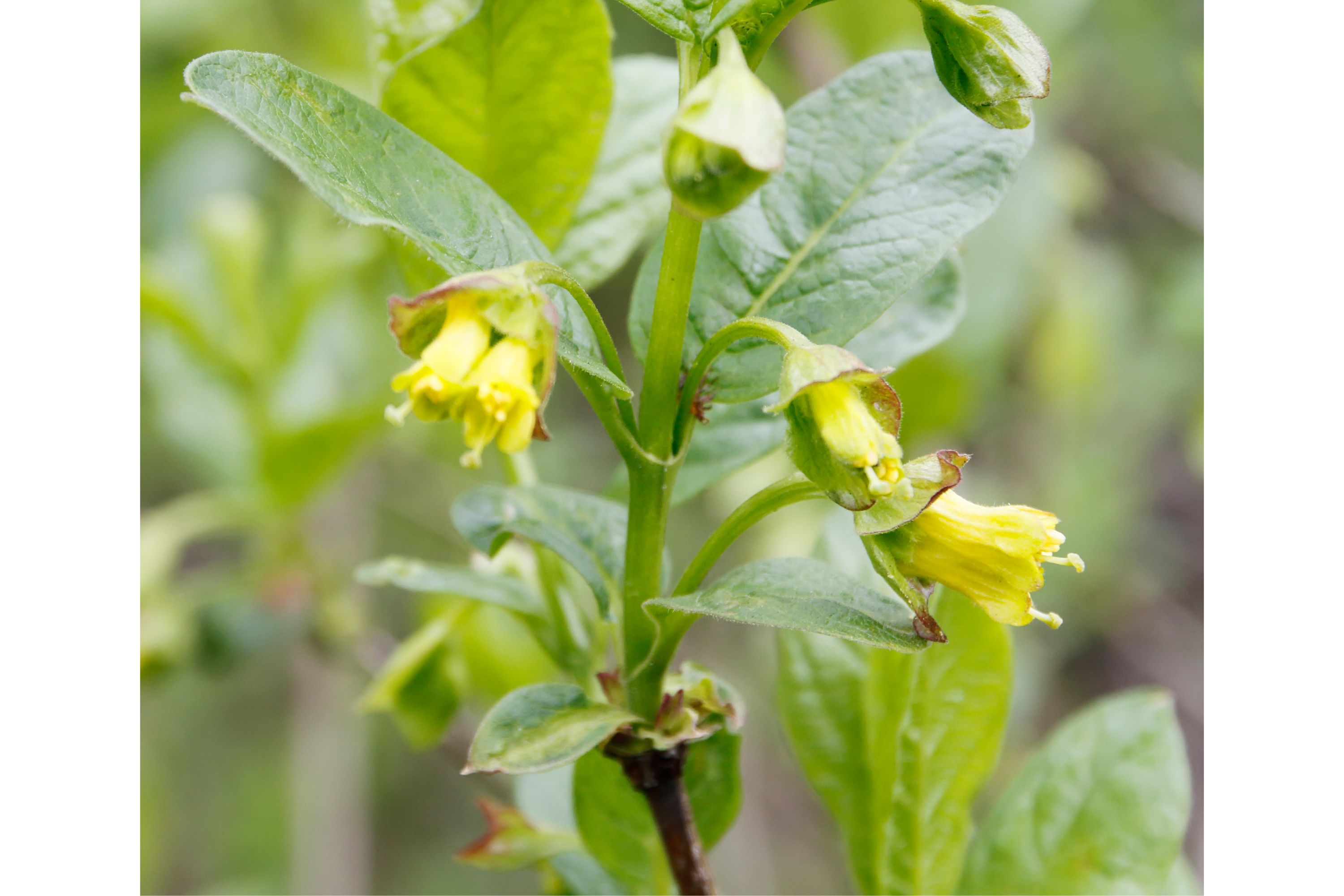Bearberry honeysuckle
(Lonicera involucrata)

Description
Lonicera involucrata, the bearberry honeysuckle, bracted honeysuckle, twinberry honeysuckle, Californian Honeysuckle, twin-berry, or black twinberry, is a species of honeysuckle native to northern and western North America. It is found from southern Alaska east across boreal Canada to Quebec, and south through the western United States to California, and to Chihuahua in northwestern Mexico. It grows at elevations from sea level to 2,900 m. While its conservation status is considered to be secure through most of its range, black twinberry is considered vulnerable in Alaska, Manitoba, and Colorado and critically imperiled in Wisconsin. It grows in moist, wooded areas, especially in clearings and on the edges of wetlands. Its Wetland Indicator Status is FAC+, so it is equally likely to be found in wetlands and non-wetlands. It is a large shrub that can grow 0.5–5 m high, with shoots with a quadrangular cross-section. The leaves are elliptic to oval-shaped, 3–16 cm long and 2–8 cm broad; they are hairy along the margins and on the underside, and have a distinctive abruptly acuminate tip. They are of opposite arrangement. The flowers are yellow, tubular, hairy, 1–2 cm long, and are monoecious; they are produced in pairs subtended by a pair of reddish basal bracts 2–4 cm across. The fruit is a 6–12 mm diameter black berry containing several small seeds,ripening in mid-to-late summer. Honeysuckles are arching shrubs or twining vines in the family Caprifoliaceae, native to northern latitudes in North America and Eurasia. Approximately 180 species of honeysuckle have been identified in North America and Eurasia. Widely known species include Lonicera periclymenum (common honeysuckle or woodbine), Lonicera japonica (Japanese honeysuckle, white honeysuckle, or Chinese honeysuckle) and Lonicera sempervirens (coral honeysuckle, trumpet honeysuckle, or woodbine honeysuckle). L. japonica is an aggressive, highly invasive species considered a significant pest on the continents of North America, Europe, South America, Australia, and Africa. Some species are highly fragrant and colorful, so are cultivated as ornamental garden plants. In North America, hummingbirds are attracted to the flowers, especially L. sempervirens and L. ciliosa (orange honeysuckle). Honeysuckle derives its name from the edible sweet nectar obtainable from its tubular flowers. The name Lonicera stems from Adam Lonicer, a Renaissance botanist.
Taxonomic tree:







